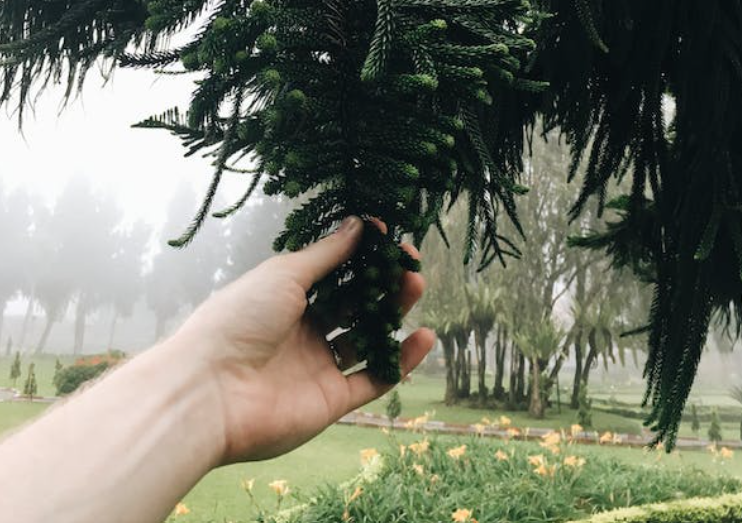
Top Tips To Make Your Firewood Last Longer
Wondering why your fire keeps going out – or your wood won’t last? As the experts in firewood, we’ve got plenty of ideas to get you back on track, giving you a roaring fire for that bit longer.
1. Check your wood type

Wood differs greatly from species to species, as well as the overall wood type. Softwoods (like fir and pine) have shorter burn times, while hardwoods (think ash and oak) burn longer.
At Logwise, we have a choice of:
- Seasoned wood (softwood or hardwood), which is dried in the great outdoors through the wind and sun. It’s our easiest-to-burn wood and cheapest choice.
- Kiln dried wood (softwood or hardwood), which is quick and easy to burn and among the driest kindling we produce. These logs are also eco friendly, as the kiln is powered by wood offcuts.
2. Check your wood moisture content
Whether it’s wood from our range or a piece from your land, you need to be aware of how damp it is. That’s because the wetter the wood, the smokier the fire – and the less likely it is to burn properly. Our wood kindling has a moisture content of less than 10% – and the standard is 20%, which shows just how seriously we take our logs.
3. Adjust your fireplace controls
Here are a few things to be aware of when it comes to your fireplace or log burner.
- Your air dampener controls the airflow, affecting oxygen levels and how quickly fuel is used
- Restricting airflow can slow the fuel burn time
- Timing is everything – you’ll need your wood ready to go to keep that fire going
4. Inspect your fireplace installation
If your fireplace or log burner isn’t installed properly – like the venting – you might have problems with burn times. Check for:
A blocked flue (soot, debris or even a bird’s nest)
- A short or small flue
- Cold air trapped in the flue
- Draughts caused by poor weather
If in doubt, contact a certified expert.
5. Fully load your fireplace
Your fire may keep going out if it’s not fed properly. Make sure you always fully load the firebox; use the right fuel to start it off; and load wood as soon as it’s needed. Bear in mind that overloading your fireplace can also smother your fire, preventing oxygen getting to the flames. Like most things, you’ll need to find a good balance. Another tip while we’re talking about loading your fire: start small. You’ll need to use something like newspaper to get a spark going, then small kindling, small logs and finally, larger logs to build your fire.
6. Clean down your fireplace after use
Soot, dust, dirt and creosote (an oil byproduct that comes from burning wood) can clog up your fireplace. You’ll also need to regularly sweep away the ashes. At Logwise, we’d also suggest getting your flue cleaned now and then to prevent build-up.
7. Give new log burners time to work
A new stove can take time to “break in” – and every model is different. We’d advise setting a few smaller fires to begin with, and getting used to the fireplace controls. Don’t forget to check the manufacturer’s instructions – they might have their own advice.
8. Consider other issues

Sometimes ventilation in your home can be an issue. It might sound counterproductive, but it can sometimes help to open a door or window, as well as any external vents, to get your fire going.
A note on storing your wood
Even with the driest firewood, poor storage can leave it at risk of rot and moisture. Here are a few tips we’d suggest:
- Keep wood off the ground, for instance in a log store or on a pallet
- Move logs inside once dry
- Use an indoor store, basket or shelf to store wood indoors
Other ways we can help
From supplying you with kindling and wood to giving you options for storage, there’s lots we can help with at Logwise. Our experts are readily on hand for help and advice, and you can also look back over previous blog posts for insights into everything from building an outdoor fire to toasting marshmallows.
Browse our best sellers
-
Kiln dried logs, shipping-dependent
From £155.00 Select options This product has multiple variants. The options may be chosen on the product page -
Kiln dried logs, shipping-dependent
From £155.00 Select options This product has multiple variants. The options may be chosen on the product page
-
From £5.00 Select options This product has multiple variants. The options may be chosen on the product page
-
Eco firelighters, Eco firelighters local, Logwise local
From £3.00 Select options This product has multiple variants. The options may be chosen on the product page














